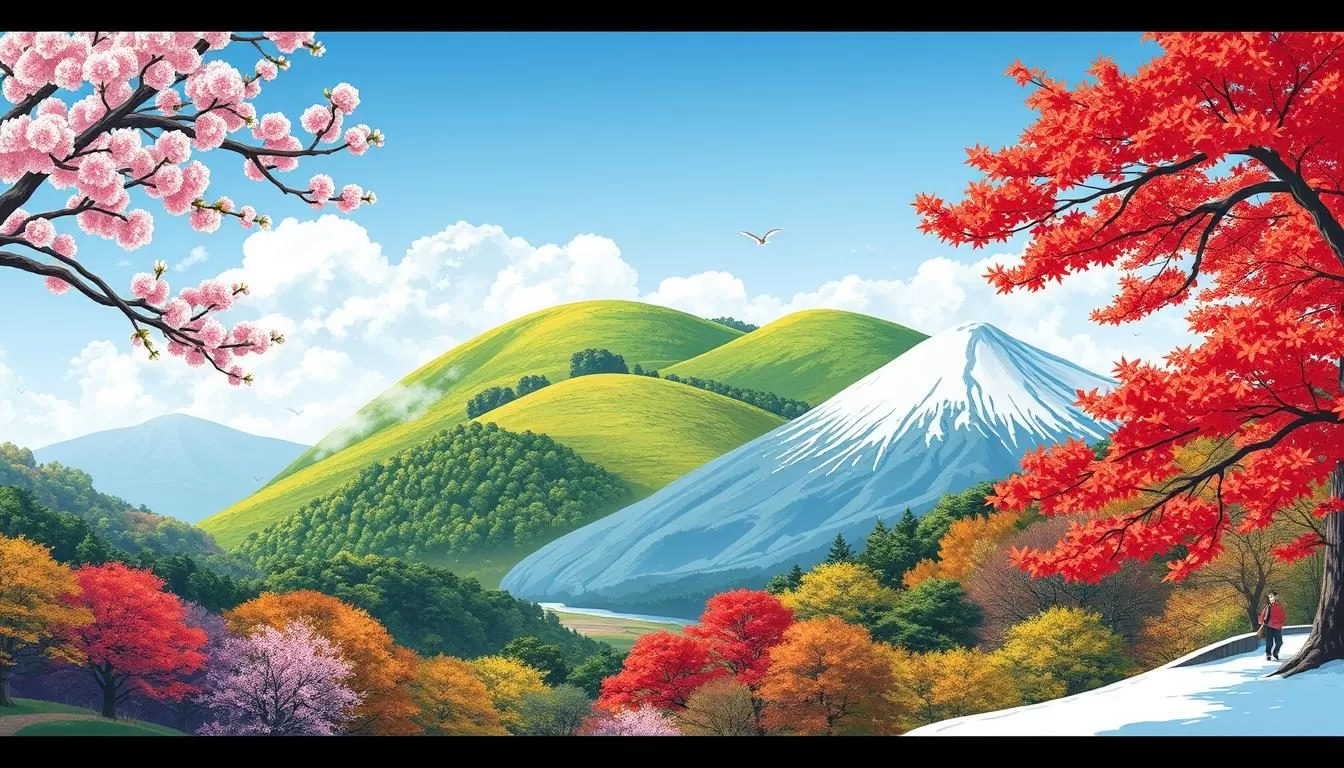✓ Accommodations✓ Flights✓ Rental Cars
Discover the ideal time to visit Ishikawa Prefecture, where the Sea of Japan influences a rich cultural heritage. You’re about to uncover the perfect timing for your journey to this hidden gem on Japan’s west coast.
Understanding Ishikawa’s Climate for a Memorable Trip
Weather plays a crucial role in planning your Ishikawa adventure, as this prefecture experiences four distinct seasons with unique characteristics. Understanding Ishikawa’s climate patterns will ensure you pack appropriately and maximize your enjoyment of this culturally rich region.
This comprehensive guide will help you navigate Ishikawa’s seasonal offerings, from spring cherry blossoms to winter snow festivals. Whether you’re drawn to Kanazawa’s historic districts, the natural beauty of the Noto Peninsula, or the hot springs of Kaga, timing your visit right makes all the difference.
By considering the seasonal highlights and weather conditions, you can tailor your trip to include the experiences that matter most to you. With the right timing, you’ll be able to appreciate the full depth of Ishikawa Prefecture’s cultural and natural attractions.
Discovering Ishikawa Prefecture: Japan’s Hidden Gem
Located on the coast of Japan, Ishikawa Prefecture is a hidden gem that offers a unique travel experience. As you explore this enchanting region, you’ll discover a rich tapestry of history, art, and crafts.
Geographic Location and Significance
Ishikawa Prefecture is situated on the west coast of Honshu, the largest island in Japan. The prefecture is known for its stunning natural landscapes, from the rugged Noto Peninsula to the serene gardens of Kanazawa, its capital city. Kanazawa, often referred to as Japan’s “craft capital,” is filled with unique Edo-period wooden buildings and is a testament to the region’s cultural heritage.
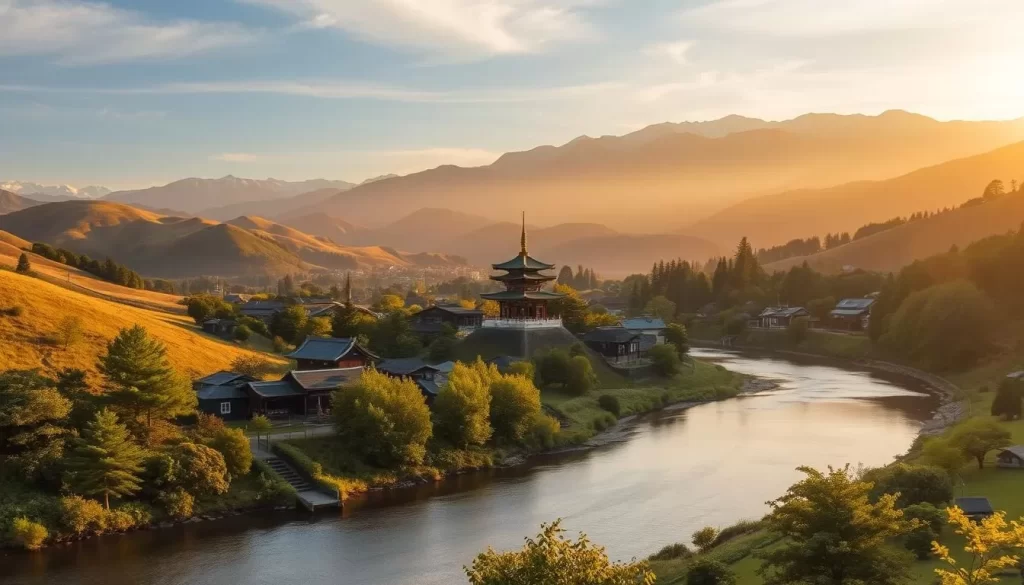
Why Weather Matters When Visiting Ishikawa
The weather in Ishikawa significantly impacts your travel experience. The prefecture experiences four distinct seasons, each offering unique cultural events and natural phenomena. Timing your trip around Ishikawa’s weather patterns can help you avoid the discomfort of summer humidity or winter travel disruptions. Certain iconic experiences, like viewing cherry blossoms or seeing snow-covered thatched roofs, are entirely dependent on seasonal timing. By considering the weather and choosing the best time to visit, you can make the most of your trip.
Ishikawa’s Four Distinct Seasons: An Overview
As you plan your trip to Ishikawa, Japan, understanding the prefecture’s seasonal weather patterns is crucial. Ishikawa Prefecture experiences a temperate climate with four distinct seasons, each offering a unique set of experiences for visitors.
Climate Patterns Throughout the Year
Ishikawa’s climate varies significantly across the year. Throughout November, the bright red and orange autumn leaves are a highlight, with Kenrokuen Garden being a particularly popular destination. The prefecture’s artisans are known for crafting gold leaf creations, bamboo baskets, and samurai swords, adding to the cultural richness of the area.
How Ishikawa’s Weather Differs from Other Japanese Regions
Ishikawa’s location on the Sea of Japan coast significantly influences its climate, making it differ from other Japanese regions. The prefecture receives heavy snowfall, with Kanazawa being one of the snowiest major cities worldwide. Unlike Tokyo, Ishikawa experiences a phenomenon called “Yukiguni” (snow country), resulting in abundant winter precipitation.
| Season | Ishikawa Prefecture | Tokyo/Osaka |
|---|---|---|
| Winter | Heavy snowfall, “Yukiguni” phenomenon | Relatively dry winters |
| Summer | Less oppressively hot, high humidity | Hot and humid |
| Temperature Fluctuations | Milder in Noto Peninsula and coastal areas | More extreme variations |
Spring in Ishikawa: Cherry Blossoms and Mild Temperatures
As spring unfolds, Ishikawa Prefecture transforms into a vibrant landscape, offering a mix of natural beauty and cultural experiences. This season is particularly special, with mild temperatures and the iconic cherry blossoms that Japan is famous for.
March: Early Spring Awakening
In March, Ishikawa begins to awaken from its winter slumber. The weather starts to warm up, with average highs reaching around 12°C (54°F). While the cherry blossoms are not yet in full bloom, the scenery becomes increasingly picturesque as the trees start to bud. It’s a great time to visit cultural sites and enjoy the early spring festivities.
April: Peak Cherry Blossom Season
April is the peak season for cherry blossoms in Ishikawa, attracting visitors from all over. The temperatures range from 9-18°C (48-64°F), making it an ideal time to explore the outdoors. You can enjoy the beautiful blooms at popular spots like Kenrokuen Garden, which is particularly stunning during this period.
May: Pleasant Weather and Fewer Crowds
May continues the pleasant weather trend, with temperatures ranging from 15-23°C (59-73°F). Although Golden Week (a series of national holidays) can attract crowds, the period after it offers a more relaxed atmosphere. You can enjoy hiking in areas like Hakusan National Park, where spring mountain flowers begin to bloom, and explore various cultural festivals and events without the peak season crowds.
| Month | Weather | Activities |
|---|---|---|
| March | Cool to mild | Cultural sites, early spring festivities |
| April | Mild | Cherry blossom viewing, outdoor activities |
| May | Warm | Hiking, cultural festivals, exploring gardens |
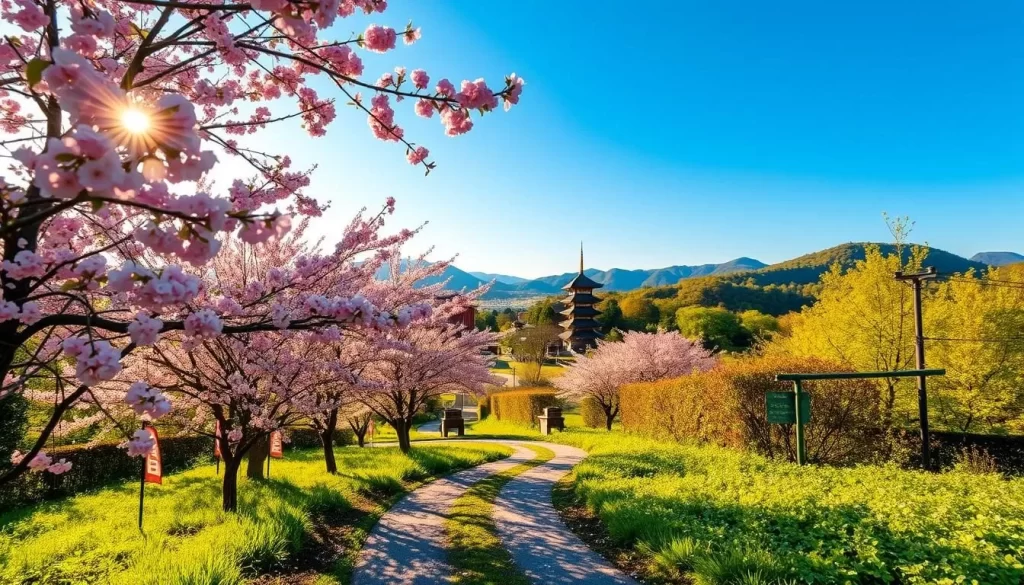
Overall, spring is one of the best times visit Ishikawa, offering a blend of natural beauty and cultural experiences. Whether you’re interested in cherry blossoms, hiking, or simply enjoying the pleasant weather, Ishikawa has something to offer.
Summer Adventures in Ishikawa Prefecture
Summer in Ishikawa Prefecture is a season of adventure, culture, and natural beauty. As the weather warms up, the region comes alive with vibrant festivals, beautiful coastal escapes, and unique cultural experiences.
June: Navigating the Rainy Season
June marks the beginning of summer in Ishikawa, but it’s also the start of the rainy season. While the rain may dampen some outdoor plans, it’s a great time to explore the region’s many indoor attractions, such as traditional samurai houses and local museums. The lush green landscapes that follow the rain showers are a beautiful bonus.
July: Summer Festivals and Coastal Escapes
July brings warmer weather and a host of summer festivals to Ishikawa. You can enjoy the peak summer festivities, including traditional dances and fireworks displays. The coastal areas, such as those along the Noto Peninsula, become popular spots to escape the heat and enjoy the beaches.
August: Heat, Humidity, and Cultural Celebrations
August is the hottest month in Ishikawa, with high temperatures and humidity. Despite the challenging weather, August offers unique cultural experiences, including the Obon festival celebrations and spectacular fireworks displays. You can also enjoy indoor activities like nagashi somen (flowing noodles) to cool off. While it’s a popular time to visit, you might encounter larger crowds at popular attractions.
Overall, summer is a great time to experience the rich cultural heritage and natural beauty of Ishikawa Prefecture, with its vibrant festivals and scenic landscapes.
Fall Foliage and Cultural Experiences: Autumn in Ishikawa
As autumn descends upon Ishikawa Prefecture, the landscape transforms into a kaleidoscope of colors. The prefecture’s rich cultural heritage and natural beauty are on full display during this season, making it an ideal time to visit.
September: Transitional Weather and Early Autumn Colors
In September, Ishikawa Prefecture experiences transitional weather, marking the beginning of autumn. The temperatures are mild, and the early autumn colors start to appear, particularly in the prefecture’s gardens and parks. You can enjoy the comfortable weather and the initial signs of autumn foliage, making it a great time to explore the outdoors.
October: Peak Foliage and Comfortable Temperatures
October is a highlight of autumn in Ishikawa, with the peak foliage season in full swing. The temperatures are comfortable, ranging from 10-20°C (50-68°F), making it ideal for outdoor activities. You can stroll through Kenrokuen Garden, admiring the vibrant autumn leaves, and explore the historic districts of Kanazawa.
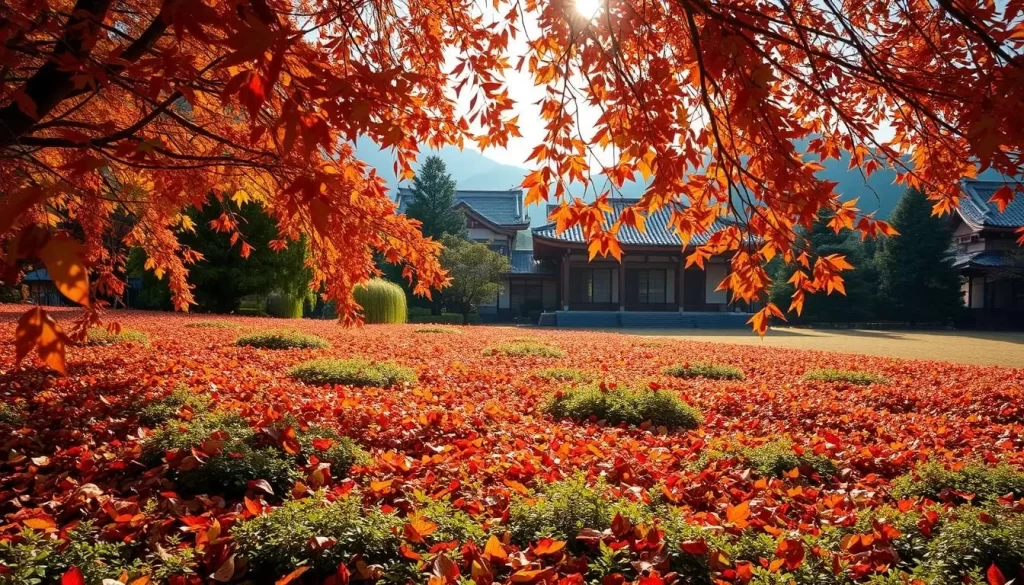
November: Ishikawa Prefecture, Japan’s Best Month for a Weather-Savvy Trip
November is considered one of the best times to visit Ishikawa Prefecture. The autumn foliage is still present, with temperatures ranging from 8-15°C (46-59°F). You can enjoy the tranquil atmosphere, as there are fewer tourists compared to October. It’s an ideal time to explore traditional crafts, visit private geiko teahouses in Kazuemachi Chaya, and relax in the prefecture’s renowned hot springs, such as Kaga Onsen, while taking in the autumn scenery.
Winter Wonders in Ishikawa Prefecture
The winter season brings a special kind of magic to Ishikawa Prefecture, with its snow-covered landscapes and warm onsen experiences. As you visit during these months, you’ll discover a serene and festive atmosphere that is unique to this time of year.
December: Early Winter and Holiday Festivities
December marks the beginning of winter in Ishikawa, with temperatures gradually dropping and the first snowfalls occurring. The prefecture comes alive with holiday festivities, including Christmas celebrations and New Year’s (Oshogatsu) preparations, offering a glimpse into local traditions and culture.
January: Snow Landscapes and Winter Activities
January is the coldest month, with significant snowfall in many areas. The snow transforms Ishikawa’s landscapes into a winter wonderland, ideal for activities like skiing and snowshoeing. The beauty of the snow-covered scenery is a major draw for visitors seeking a serene winter escape.
February: Winter Festivals and Onsen Experiences
February continues the winter season, with many regions still experiencing snow. The month features unique festivals throughout the prefecture, such as the Asano River Winter Festival in Kanazawa, known for its impressive snow lanterns. It’s also an ideal time to enjoy Ishikawa’s hot spring culture, as the cold weather enhances the pleasure of outdoor baths surrounded by winter landscapes.
| Month | Average Temperature | Notable Events |
|---|---|---|
| December | 5°C (41°F) | Holiday festivities, Christmas markets |
| January | 2°C (36°F) | Skiing, snowshoeing, New Year’s celebrations |
| February | 3°C (37°F) | Asano River Winter Festival, onsen experiences |
Kanazawa: Seasonal Highlights in Ishikawa’s Capital
With its rich cultural heritage and picturesque landscapes, Kanazawa is a must-visit destination in Ishikawa Prefecture, offering something special each season. As you explore this beautiful city, you’ll discover that its charm is deeply intertwined with the weather and time of year.
Kenrokuen Garden Through the Seasons
Kenrokuen Garden is one of Kanazawa’s most famous attractions, and its beauty varies significantly with the seasons. In the spring, the garden is adorned with sakura (cherry blossoms), while autumn brings vibrant foliage. Throughout November, the garden is painted with bright red and orange autumn leaves, creating a breathtaking landscape. The garden’s beauty is not just limited to these seasons; each time of year offers a unique experience.
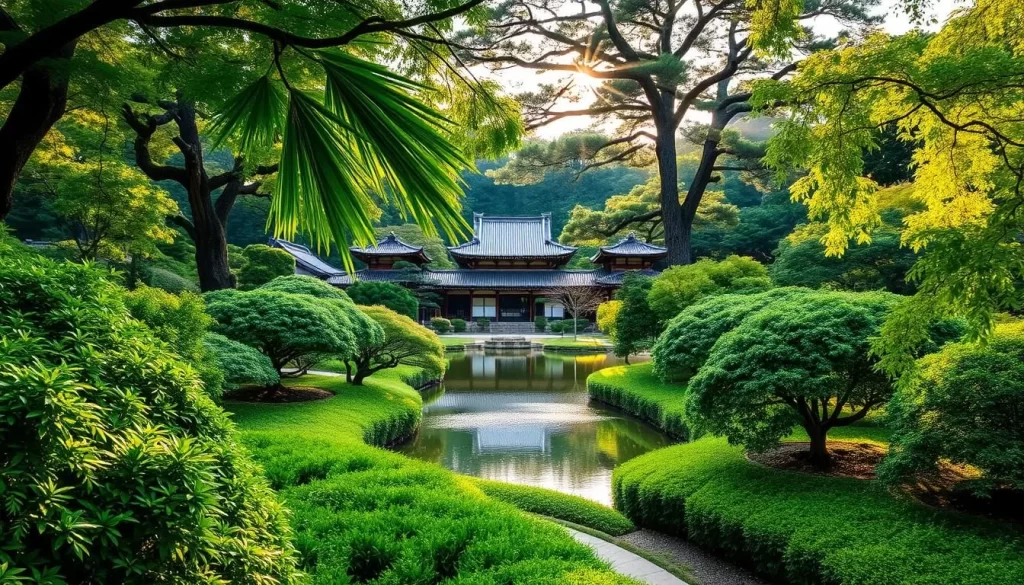
Weather-Dependent Activities in Kanazawa
Kanazawa offers a range of activities tailored to the weather conditions of each season. During spring’s mild weather, you can enjoy walking through the city’s well-preserved samurai and geisha districts. Summer’s heat makes indoor activities like visiting the contemporary art museum or traditional craft workshops particularly appealing. In autumn, the comfortable temperatures make it an ideal time for cycling tours or exploring the nearby Utatsuyama Temple Area. Winter transforms Kanazawa into a serene landscape, perfect for photography walks or enjoying gold leaf-decorated hot drinks in traditional teahouses.
| Season | Weather | Activities |
|---|---|---|
| Spring | Mild | Walking tours, cherry blossom viewing |
| Summer | Hot | Indoor activities, seafood |
| Autumn | Comfortable | Cycling, foliage viewing |
| Winter | Cold | Photography, traditional teahouses |
Beyond Kanazawa: Weather Considerations for Ishikawa’s Other Attractions
While Kanazawa is a must-visit destination in Ishikawa Prefecture, the region’s other attractions are equally captivating, each with its own unique charm and weather considerations. As you plan your trip, understanding the seasonal changes in these areas can help you make the most of your visit.
Noto Peninsula: Best Times to Visit
The Noto Peninsula, with its rugged coastline and rural landscapes, offers a serene experience. The best times to visit are during spring and autumn when the weather is mild and pleasant. In spring, you can enjoy the beauty of blooming flowers, while autumn brings comfortable temperatures and stunning foliage.
Kaga Region: Seasonal Onsen Experiences
The Kaga region is renowned for its onsen (hot springs), offering a unique experience with each season. In summer, you can relax in an evening bath after a hot day, often accompanied by seasonal kaiseki cuisine. Winter transforms these hot springs into magical experiences, with snow falling around you as you soak in steaming waters.
- Spring brings the pleasure of soaking in outdoor baths while viewing cherry blossoms.
- Autumn creates a perfect setting for rotenburo (outdoor baths) surrounded by colorful foliage.
- Historic baths like Yuwaku Onsen are particularly enchanting during winter.
Practical Travel Tips: Avoiding Crowds and Peak Prices
Planning a trip to Ishikawa Prefecture requires more than just choosing a destination; it demands strategic timing to avoid the crowds and peak prices. Understanding the local seasonal patterns and holidays can significantly enhance your travel experience.
Japanese Holiday Periods to Consider
One of the key factors to consider when planning your trip is the timing of Japanese holidays. Golden Week, a series of national holidays, is a peak period for domestic travel, making popular destinations more crowded. By avoiding travel during these peak holiday periods, you can enjoy a more relaxed experience.
Shoulder Season Advantages in Ishikawa
Visiting Ishikawa during the shoulder season—the periods just before or after peak tourist times—offers several advantages. For instance, late May to early June provides pleasant weather after the Golden Week crowds have dispersed, with gardens and natural areas at their lush green best. Similarly, September offers warm days and early autumn colors without the October foliage-viewing crowds. Late November continues to showcase autumn beauty with significantly fewer tourists than October, making it one of the best times to visit. Early December brings a winter atmosphere and preparations for the New Year without holiday-period crowds and price increases, making it another best time for a visit.
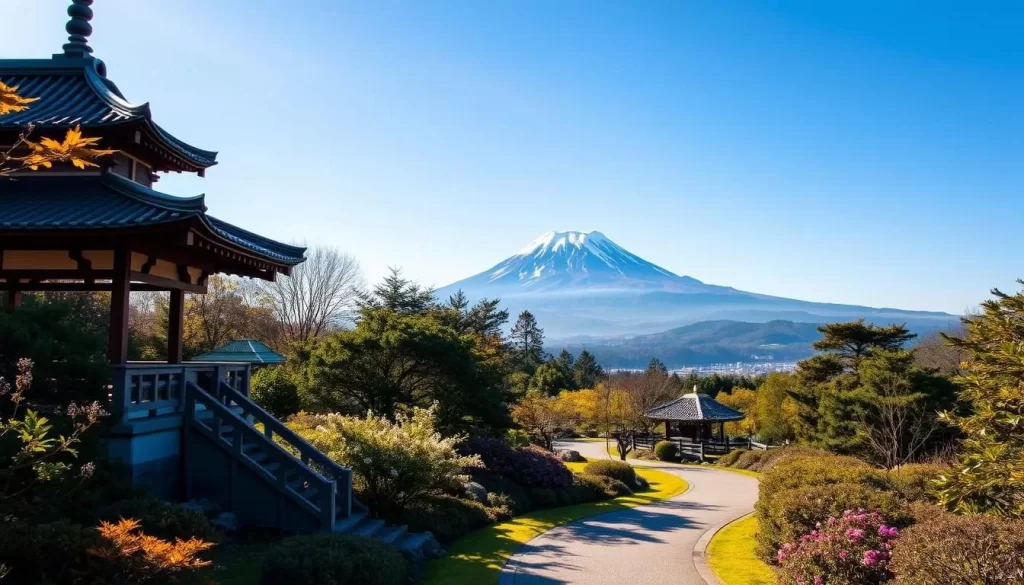
Packing Essentials for Each Season in Ishikawa
Preparing for your trip to Ishikawa involves more than just booking your travel; it’s about packing the right gear for the season you’re visiting in. Ishikawa Prefecture experiences a range of weather conditions throughout the year, making it essential to pack accordingly to enjoy your trip to the fullest.
Seasonal Clothing Recommendations
When it comes to clothing, Ishikawa’s distinct seasons require different approaches. For spring, particularly during the cherry blossom season, comfortable walking shoes and layers for mild temperatures are recommended. Summer calls for lightweight, breathable clothing to combat the heat, while autumn requires a mix of layers for the cooler mornings and evenings. In winter, warm, insulated clothing is a must, especially if you plan on enjoying snow activities or exploring rural areas.
- Spring: Layers, comfortable shoes
- Summer: Lightweight, breathable clothing
- Autumn: Layered clothing for cooler mornings and evenings
- Winter: Warm, insulated clothing
Weather-Related Gear and Accessories
Beyond clothing, certain weather-related items can significantly enhance your experience in Ishikawa. A quality umbrella is indispensable, not just during the rainy season in June but also for unexpected showers during the cherry blossom season. For summer, portable fans and cooling towels can be lifesavers when exploring outdoor attractions. In winter, pocket warmers (kairo) are invaluable for keeping warm while enjoying snow scenes or visiting onsen.
- Umbrella for rainy days and unexpected showers
- Portable fans and cooling towels for summer heat
- Pocket warmers for winter warmth
- Appropriate footwear for each season: waterproof shoes, comfortable walking shoes, insulated boots
- Sun protection: hats, sunscreen for year-round use
Conclusion: Choosing Your Perfect Time to Visit Ishikawa
With a grasp of Ishikawa’s seasonal weather patterns, you’re better equipped to choose the ideal time for your journey. You’ve gained a comprehensive understanding of how the weather affects your travel experience throughout the year.
Consider your personal preferences, whether you prioritize ideal weather conditions, specific seasonal attractions, or avoiding crowds. Each season in Ishikawa offers unique things to see and experience.
Ultimately, the best time to visit Japan, specifically Ishikawa, is when its seasonal offerings align with your travel preferences.
The above is subject to change.
Check back often to TRAVEL.COM for the latest travel tips and deals.
